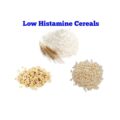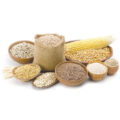Cereal is a common first food for infants, as it is easy to digest and provides essential nutrients such as iron, calcium, and vitamins. However, certain types of cereal can trigger allergic reactions in some infants, which can be a cause for concern.
In this article, we will explore which cereal is least likely to cause allergies in infants and why.
What are Infant Allergies?
Infant allergies are immune responses to substances that are normally harmless. These substances are called allergens and can be found in various foods, medicines, and environmental factors. Common allergens that trigger infant allergies include cow’s milk, soy, wheat, eggs, peanuts, tree nuts, and fish.
Allergic reactions can vary from mild to severe, depending on the individual’s sensitivity to the allergen. Symptoms of an allergic reaction may include skin rashes, hives, swollen eyes, runny nose, coughing, wheezing, and in severe cases, anaphylaxis.
What are Infant Cereals?
Infant cereals are processed grains that are specially designed for babies who are transitioning from breast milk or formula to solid foods. Infant cereals come in various types, including rice, oat, barley, and multigrain cereals. These cereals are fortified with essential nutrients such as iron, zinc, and vitamins to support healthy growth and development.
Infant cereals are usually mixed with breast milk, formula, or water to create a thin, smooth consistency that is easy for babies to swallow. They are typically introduced to infants between 4 and 6 months of age, depending on their developmental readiness.
Which Cereal is Least Likely to Cause Allergies in Infants?
When it comes to choosing the least allergenic cereal for infants, there is no one-size-fits-all answer. However, several factors can influence the likelihood of an infant having an allergic reaction to a particular cereal. These include the following:
- Allergen Content: The type of cereal and the ingredients used to make it can affect its allergen content. For example, rice cereal is often recommended as a first food for infants because it is low in allergens such as gluten and protein. Oat cereal, on the other hand, may contain traces of gluten, which can trigger celiac disease in some infants.
- Family History of Allergies: Infants who have a family history of allergies are more likely to develop allergies themselves. In such cases, it is advisable to introduce cereals gradually and monitor for any allergic reactions.
- Infant’s Age and Developmental Readiness: Infants who are younger than 4 months of age may not be developmentally ready to digest solid foods, including cereal. It is essential to wait until the infant shows signs of readiness, such as being able to sit up with support and showing interest in food.
- Method of Introduction: The method of introducing cereal to an infant can also affect the likelihood of an allergic reaction. It is advisable to start with a small amount of cereal mixed with breast milk or formula and gradually increase the amount over time.
- Processing Methods: Some cereal manufacturers use processing methods that can reduce the allergen content of their products. For example, some rice cereal brands use enzymatic processes that break down the proteins that can trigger allergic reactions.
Based on these factors, rice cereal is often considered the least allergenic cereal for infants. Rice cereal is low in allergens such as gluten and protein and is easy to digest. However, oat cereal and barley cereal can also be good choices, depending on the infant’s individual needs.
Rice Cereal
Rice cereal is a popular first food for infants because it is low in allergens and easy to digest. Rice cereal is made from ground rice grains that have been processed to remove the bran and germ, leaving only the starchy endosperm. This process results in a smooth, fine powder that is easy to mix with breast milk or formula to create a thin, easy-to-swallow consistency for infants.
One of the reasons why rice cereal is considered the least allergenic cereal for infants is that it is naturally gluten-free. Gluten is a protein found in grains such as wheat, barley, and rye that can trigger celiac disease in some infants. Rice, on the other hand, does not contain gluten, making it a safe choice for infants with celiac disease or gluten sensitivity.
Rice cereal is also low in protein, which is another common allergen. Infants who are at high risk of developing allergies, such as those with a family history of allergies, may benefit from starting with a low-protein cereal such as rice cereal.
However, it is worth noting that rice cereal has been associated with concerns about arsenic exposure in recent years. Arsenic is a naturally occurring element that can accumulate in rice crops, particularly in rice grown in areas with high levels of arsenic in the soil. The FDA has set limits on the amount of arsenic that is allowed in infant rice cereal (100 micrograms per kilogram (μg/kg) or 100 parts per billion) and recommends that caregivers vary the types of grains and other cereals given to infants to reduce potential exposure.
Oat Cereal
Oat cereal is another popular choice for infants as it is high in fiber, iron, and other essential nutrients. Oat cereal is made from ground oats that have been processed to remove the outer husk, leaving only the inner oat groat. Oat cereal can be a good choice for infants who are ready for a more substantial texture and a slightly nutty flavor.
Oats are naturally gluten-free, but they are often grown and processed alongside other grains such as wheat, barley, and rye, which can result in cross-contamination. For this reason, caregivers should look for oat cereal that is labeled gluten-free to ensure that it is safe for infants with celiac disease or gluten sensitivity.
Some studies have suggested that introducing oats early in infancy may reduce the risk of developing allergies later in life. However, other studies have not found a significant difference in allergy rates between infants who were introduced to oats early and those who were not. More research is needed to determine the role of oats in allergy prevention.
Barley Cereal
Barley cereal is another option for infants who are ready for a thicker texture and a slightly sweeter taste. Barley cereal is made from ground barley grains that have been processed to remove the outer hull, leaving the inner kernel. Barley is high in fiber, protein, and other essential nutrients, making it a nutritious choice for infants.
Like oats, barley is naturally gluten-free but can be cross-contaminated during processing. Caregivers should look for barley cereal that is labeled gluten-free to ensure that it is safe for infants with celiac disease or gluten sensitivity.
Barley cereal may be a good choice for infants who are at risk of iron deficiency anemia. Barley is naturally high in iron, which can help prevent iron deficiency anemia in infants who are not getting enough iron from breast milk or formula.
Conclusion
Choosing the right cereal for an infant can be a challenging task, particularly for parents of infants who are at high risk of developing allergies. Rice cereal is often considered the least allergenic cereal for infants due to its low allergen content and ease of digestion. However, oat cereal and barley cereal can also be good choices, depending on the infant’s individual needs.
It is important to introduce cereals gradually and monitor for any signs of allergic reactions, especially in infants with a family history of allergies. Caregivers should also vary the types of cereals given to infants to ensure a balanced and varied diet





